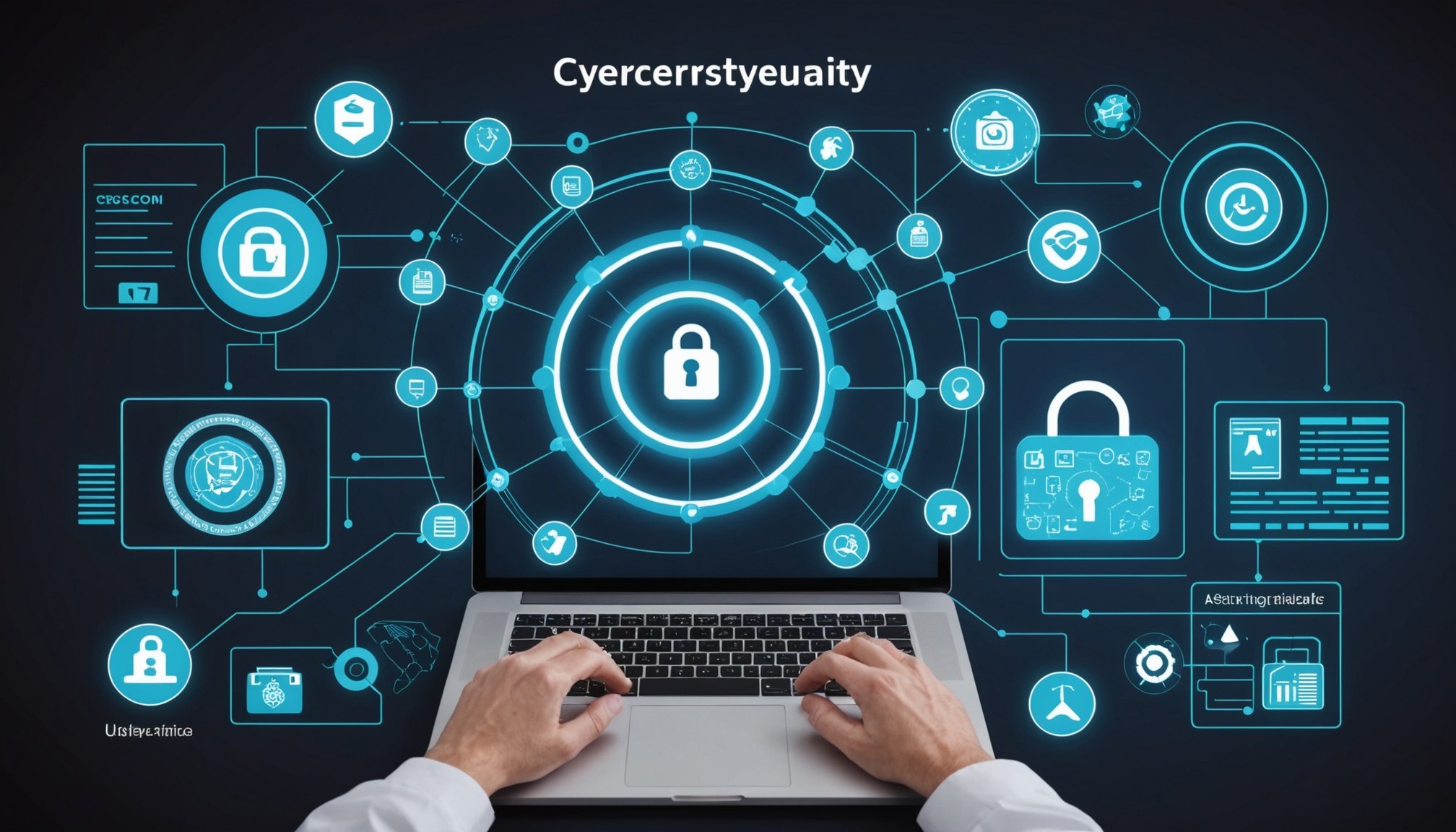Overview of Cybersecurity in the UK Healthcare Sector
With rising threats, cybersecurity is crucial in safeguarding patient data within the UK healthcare system. Patient data protection is vital, as breaches could lead to identity theft and compromised medical records. Protecting sensitive information is not just a technological necessity but a moral and legal obligation.
The UK healthcare sector confronts several unique challenges. Unlike other industries, healthcare organizations handle vast amounts of sensitive personal information, such as medical histories and financial data. This information makes them attractive targets for cybercriminals. Additionally, healthcare systems often rely on outdated technologies, making them more susceptible to cyber threats. Balancing the need for technological advancement with finite resources further complicates their cybersecurity strategy.
Have you seen this : Essential Elements for Crafting a Winning Digital Transformation Strategy in UK Businesses
The regulatory environment in the UK further underscores the importance of data protection. Laws such as the General Data Protection Regulation (GDPR) and the Network and Information Systems Regulations impose stringent requirements on healthcare institutions to ensure data confidentiality and integrity. Non-compliance can result in hefty fines and loss of trust.
In addressing these challenges, healthcare organizations are urged to adopt robust security measures. Regular training for staff, employing the latest security technology, and maintaining an updated cybersecurity framework can mitigate risks. Understanding these dynamics is crucial for creating a resilient healthcare infrastructure that prioritizes patient safety and data integrity.
Additional reading : Top Strategies for Deploying AI-Powered Customer Service in the UK Telecom Sector
Fundamental Components of Cybersecurity Strategy
When designing a cybersecurity strategy, it’s vital to focus on several fundamental components. Risk management stands out as a central pillar, ensuring that all potential threats are identified and mitigated. Effective risk management involves regular assessments to prioritize risks and allocate resources effectively. This proactive approach to threat assessment helps in recognizing vulnerabilities before they can be exploited.
A well-rounded cybersecurity strategy should also incorporate a robust incident response plan. Such a plan delineates the procedures to follow in the event of a security breach. Essential elements include identifying the nature of the incident, containing the impact, eliminating the threat, and recovering operations to normalcy. Equally critical is analyzing and learning from these breaches to prevent future occurrences.
To enable a swift and effective response to incidents, it is crucial to create a cross-functional team equipped with the necessary skills and authority. This team should be regularly trained, ensuring readiness in managing incidents promptly and effectively.
By integrating these components into a comprehensive cybersecurity strategy, organizations bolster their defenses against cyber threats. The focus on risk management and incident response ensures not just a defense mechanism but also the ability to swiftly and effectively address any security challenges that arise.
Threat Assessment and Risk Management
Understanding and managing risks is crucial for safeguarding healthcare information systems against cyber threats.
Identifying Potential Threats
In the healthcare sector, it’s essential to regularly conduct threat assessments to identify potential risks. This involves recognizing familiar cyber threats like phishing, ransomware, and data breaches, which can compromise sensitive patient information. By being aware of the landscape, healthcare entities can better anticipate and prepare for these threats.
Conducting Vulnerability Assessments
A comprehensive vulnerability analysis is key to identifying system weaknesses. This entails examining hardware, software, and network architecture to uncover any exploitable points. Techniques to assess vulnerabilities include penetration testing and system audits, which simulate attacks to evaluate the effectiveness of security measures.
Strategies for Mitigating Risks
Mitigating risks requires a structured approach. Effective risk management strategies in healthcare include regular risk assessments to keep up with the evolving threat landscape. Prioritizing vulnerabilities based on their impact and likelihood is crucial. Implementing robust security protocols, such as encryption, multi-factor authentication, and continuous monitoring, can significantly reduce risks. Regular staff training ensures that employees are aware of potential threats and can respond appropriately, further enhancing security.
Compliance with Regulations
In the rapidly evolving digital landscape of the healthcare sector, staying abreast of UK regulations is more crucial than ever. Key among these are the GDPR (General Data Protection Regulation) and NHS cybersecurity guidelines, both designed to safeguard sensitive patient data.
The GDPR enacts strict requirements on organisations handling personal information, demanding transparency, data minimisation, and robust security measures. Non-compliance can result in hefty fines and significant reputational damage, underscoring the importance of adherence. This regulation ensures that patient data is processed with the utmost care and respects individuals’ rights over their personal information.
Equally, NHS cybersecurity standards focus on protecting healthcare networks and systems from cyber threats. These guidelines mandate proactive risk assessments, continuous monitoring, and timely incident response strategies. Compliance not only fortifies the defence against data breaches but also enhances trust among patients and stakeholders.
Failure to comply with these regulations can bring severe consequences. For instance, in addition to financial penalties, healthcare providers may face legal actions and a loss of patient trust, which can impact their reputation and operational efficiency. Therefore, maintaining compliance is not merely a legal obligation but a core component of sustaining a secure and trusted healthcare environment.
Employee Training and Awareness
Understanding the importance of employee training in cybersecurity can significantly enhance an organisation’s security posture. Training focuses on equipping employees with the necessary skills to identify and respond to security threats, forming a frontline defence against cyber incidents. Cybersecurity training programs aim to instill a proactive attitude toward potential vulnerabilities, ensuring that staff are prepared to tackle varied scenarios.
Best Practices for Training Programs
Implementing awareness programs is fundamental in developing sound cybersecurity habits. Start with a curriculum that covers essential topics such as phishing, data breach protocols, and password security. Relevance and engagement are crucial—integrate real-world examples and interactive sessions to make the learning retainable. Encourage employees’ participation and adapt the program to reflect evolving threats and trends.
Building a Culture of Cyber Awareness
Creating a culture where cybersecurity is seen as every employee’s responsibility can be transformative. Encourage dialogue and appoint cyber ambassadors who can guide colleagues. Cyber knowledge should be an ongoing conversation, not a one-time event. This approach ensures a heightened perception of risks and fosters a collective commitment to protecting digital assets.
Evaluating Training Effectiveness
To measure the impact of training programs, utilize metrics like incident reduction rates or performance in simulated attacks. Feedback surveys post-training sessions offer insights into areas needing improvement. Continual evaluation is critical, ensuring that training stays relevant and impactful, aligning with the organisation’s cybersecurity strategy and goals.
Developing an Incident Response Plan
Creating an effective incident response plan is crucial for robust crisis management. To ensure comprehensive coverage, the plan should encompass several key elements. Primarily, a clear response strategy must be established, outlining specific actions for various types of incidents. This includes identifying responsible personnel, the chain of command, and procedures for containment and mitigation.
A vital component often overlooked is the importance of simulation and readiness exercises. These exercises are designed to test the response strategies under controlled conditions, helping identify any weaknesses or areas for improvement. By engaging in regular simulations, organizations can enhance their responsiveness and adapt to real-world scenarios more effectively.
Another critical aspect is the role of communication in crisis management. Effective communication channels need to be established both internally and externally. Internally, this ensures that all team members are coordinated and informed about their roles and responsibilities. Externally, clear communication can manage stakeholders’ expectations and mitigate the spread of misinformation during a crisis.
Including these elements while developing an incident response plan can dramatically enhance the organization’s ability to handle unforeseen events. As such, dedicating time and resources to creating, testing, and refining an incident response plan is a worthy investment for any organization striving for resilience.
Real-World Examples and Case Studies
Exploring cybersecurity case studies provides valuable insights into successful and failed implementations, especially within the healthcare sector. By examining notable case studies and understanding the lessons learned, organizations can adopt best practices to enhance their security frameworks and mitigate risks.
Case Study: Successful Cybersecurity Implementation
In the UK, a prominent hospital network implemented a robust cybersecurity framework, demonstrating an exemplary approach to safeguarding sensitive data. They integrated advanced encryption technologies and utilized sophisticated multi-factor authentication processes. This proactive strategy not only protected patient data but also reinforced trust among stakeholders and strengthened compliance with regulatory bodies.
Lessons Learned from Security Breaches
Healthcare incidents can serve as cautionary tales, highlighting the necessity for comprehensive security measures. An analysis of past breaches reveals common vulnerabilities, such as outdated software and weak password protocols. Lessons learned underscore the importance of regular system updates, employee training on phishing attacks, and stringent access controls to prevent unauthorized data access.
Best Practices Adopted by Leading Healthcare Organizations
Leading healthcare institutions have set benchmarks by adopting best practices that enhance security. These include:
- Conducting frequent security audits to identify and rectify vulnerabilities.
- Establishing a culture of cybersecurity awareness among staff.
- Implementing data encryption and securing networks against potential threats.
By aligning with these practices, organizations can effectively protect sensitive healthcare information and prevent future breaches.
Actionable Recommendations
Developing a strong cybersecurity strategy is more critical than ever. Implementing practical steps ensures robust protection. Begin by conducting a comprehensive risk assessment to identify vulnerabilities within your organisation. This assessment lays the foundation for prioritising and addressing potential threats.
Implementing actionable strategies involves setting up multi-layered security measures. Start with firewalls and anti-virus software, then progress to more advanced solutions like intrusion detection systems. It’s essential to regularly update software and protocols to keep up with evolving threats.
The significance of continuous monitoring and improvement cannot be overstated. Establish a routine for regular security audits and vulnerability assessments. This proactive approach allows you to identify and address new threats before they become severe issues. By monitoring network traffic and system activities consistently, you can detect anomalies promptly, reducing response times.
Collaboration with stakeholders is vital. Engaging IT staff, management, and even end-users in security discussions can foster a culture of awareness and responsibility. Regular training sessions can help ensure everyone understands their role in maintaining security.
Implementation tips include creating a detailed incident response plan. This plan should outline steps to be taken in the event of a security breach, ensuring a swift and organised response that minimises damage.











